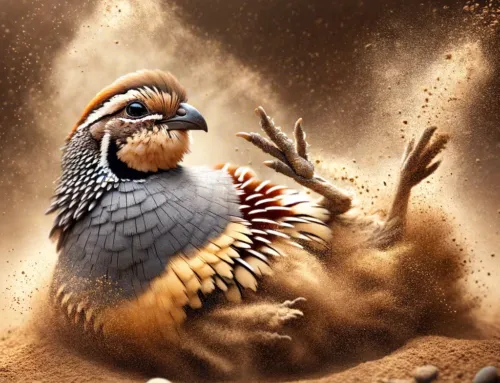Exploring the Varieties: Common Quail Breeds
Exploring the Varieties: Common Quail Breeds
Coturnix and Bobwhite quails stand out as the most commonly kept breeds, each with its distinct traits and advantages.

Coturnix and Bobwhite quails stand out as the most commonly kept breeds.
Quails have long been admired for their resilience, beauty, and the unique benefits they bring to homesteads and aviaries alike. Among the numerous species, Coturnix and Bobwhite quails stand out as the most commonly kept breeds, each with its distinct traits and advantages. This blog post delves into the characteristics of these popular quail breeds, offering insights into their care, behavior, and why they’ve become favorites among bird enthusiasts.
Coturnix Quails (Coturnix coturnix)
Origin and Characteristics: Coturnix quails, also known as Japanese quails, originate from Asia but have gained popularity worldwide. They are renowned for their rapid growth rate and early maturity, often starting to lay eggs as early as six weeks of age. These birds are relatively small, with adults weighing between 100 to 120 grams. They exhibit a range of colors, from the wild-type brown with black speckles to more ornamental varieties like tuxedo, golden, and white.
Why They’re Popular:
Egg Production: Coturnix quails are prolific layers, offering a steady supply of eggs almost year-round. Their eggs are smaller than chicken eggs but are considered a delicacy and prized for their nutritional value.
Meat Quality: These quails are also raised for their tender and flavorful meat, a sustainable source of protein for small-scale farmers and homesteaders.
Ease of Care: Coturnix quails adapt well to captivity and can thrive in smaller spaces, making them suitable for urban farming projects.
Bobwhite Quails (Colinus virginianus)
Origin and Characteristics: Native to North America, Bobwhite quails are named after their distinctive “bob-white” call. These birds are larger than their Coturnix counterparts, with adults typically weighing between 150 to 200 grams. Bobwhites feature a striking pattern of brown, white, and black feathers, with males sporting a white throat and eye stripes.
Why They’re Popular:
Game and Conservation: Bobwhite quails are popular among game bird enthusiasts for hunting and conservation efforts, with efforts to restore their natural habitats and wild populations.
Ornamental Value: Their beautiful plumage and calls add aesthetic value to aviaries and backyards, making them a favorite among bird watchers and hobbyists.
Sociable Nature: These quails tend to form strong social bonds and exhibit interesting behaviors, providing endless fascination for those who keep them.
Choosing Between Coturnix and Bobwhite Quails
When deciding between Coturnix and Bobwhite quails, consider your goals for keeping quails. If you’re interested in egg and meat production with minimal space, Coturnix quails might be the ideal choice. On the other hand, if you’re drawn to the aesthetic and conservation aspects or are interested in game bird rearing, Bobwhite quails could be more aligned with your interests.
Regardless of the breed you choose, both Coturnix and Bobwhite quails offer rewarding experiences for enthusiasts. Their care needs, while not demanding, require commitment to ensure their well-being and productivity. Proper housing, nutrition, and protection from predators are essential for raising healthy quails.
Coturnix and Bobwhite quails each bring unique characteristics and benefits to the table. Whether you’re a seasoned aviculturist or a newcomer to the world of quail keeping, understanding these breeds can help you make informed decisions and enrich your experience with these remarkable birds. As you embark on or continue your journey with quails, remember that the joy of keeping these birds goes beyond their utility, offering a connection to the natural world and the satisfaction of nurturing life.



